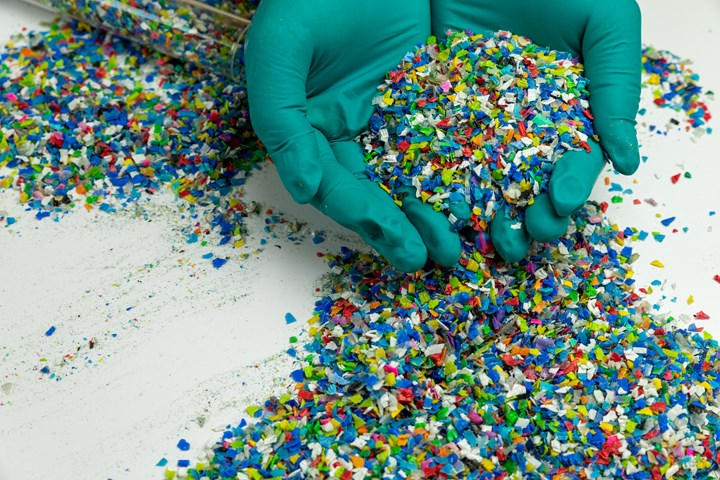
Sugar-Based Plastics Developments Advance Further

Photo Credit: University of Burmingham
This past January, we reported on a research team from U.K’s University of Brimingham and Duke University that have been collaborating on the development of a novel family of polymers from sustainable sources that reportedly retain all the same properties as typical thermoplastic elastomers, but are degradable and mechanically recyclable. The researchers used sugar-based starting materials—more specifically, isosorbide and isomannide compounds to create two polymers, both of which were shown to have superior properties to conventional TPEs.
More recently, the researchers discovered that the TPE made from isosorbide displayed superior elastic recovery and toughness which was shown to be a result of the stereochemistry of the sugar groups in the materials. Using computer simulations and other experimental techniques, the researchers showed that the difference in elastic recovery results from the way that the sugar stereochemistry directs the network of hydrogen bonds between and within the long-chain molecules. The researchers concluded that both polymers have high optical clarity, exceptional mechanical strength and extensibility, but the isosorbide-based polymer has superior toughness, due to its higher elasticity.
In a paper published in Angew Chemie, Ultra-Tough Elastomers from Stereochemistry-Directed Hydrogen Bonding in Isosorbide-Based Polymers, the research team reported that by creating isosorbide-based polymers with high molar masses in alternating sequences, instead of the block structures found in traditional polyurethane TPEs, they can obtain TPEs with exceptional mechanical strength, extensibility and high opticals. These outstanding properties are correlated to a supramolecular hydrogen-bonding mechanism underpinning the strain-hardening behavior.
Contrasting the elastomeric behavior of the isosorbide polymer with an isomeric analogue formed from isomannide, the researchers demonstrated that the backbone regioirregularity that results from the endo/exo stereochemistry of isosorbide (vs. the exo/exo stereochemistry of isomannide) provides distinct advantages with respect to network dynamics that manifest in the elastic recovery behavior and superior toughness. Moreover, they demonstrated that this behavior results from the combination of the structurally rigid isosorbide unit being adjacent to a urethane group.
Said professor Andrew Dove, from Birmingham’s School of Chemistry who led the research team, “The long-term impacts of modern polymers on the environment are a significant concern. Isosorbide is a renewable feedstock alternative to petroleum derivatives for commercial polymer production. It is derived from plants, and, as one of the top 20 biomass sourced molecules, is available at a scale that is consistent with commercial production of bioplastics.”
Added Duke University professor Matthew Becker, “Most bio-sourced plastics have lacked the mechanical properties needed to compete in commercial applications and lose nearly all of their mechanical properties when reprocessed. The materials outlined in this paper change that paradigm”.
A joint patent application has been filed by University of Birmingham Enterprise and Duke University, covering both the polymers, and the method of making them. The researchers are now looking for industrial partners who are interested in licensing the technology.
RELATED CONTENT
-
‘Super-TPVs’: The New Challenge to Rubber
Recent commercialization of a cluster of novel thermoplastic vulcanizate (TPV) families is promising to boost demand for thermoplastic elastomers in new and challenging industrial and consumer product segments.
-
Polyurethanes: Bio-Based Materials Capture Attention
The hot topic at this year’s PUR conference was rigid and flexible foams with increased biobased content. There was also news in one-component cast elastomers, surfactants, and TPUs.
-
Injection Molding LSR: Three ‘M’s of Innovation: Mega, Micro, and Multi
Liquid silicone rubber is breaking out of its niche into a broader array of applications, helped by new developments in materials, machinery, and processing. Larger parts, micro-parts, foams, and multi-color or multi-material combinations are key areas of innovation.

Leave a Reply